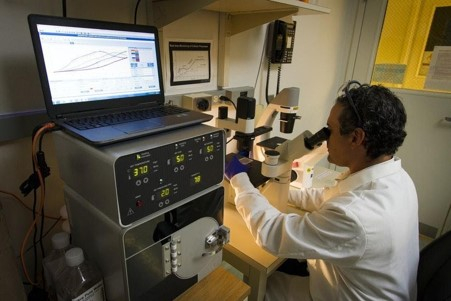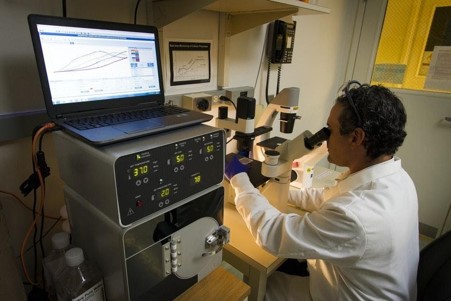
@ShahidNShah


Our society is swiftly moving towards digitalization. Photos, documents, thoughts, banks — our identities are transformed into coded data. Consequently, the digitalization tendency is taking over one of the most vital industries — healthcare.
Unfortunately, the healthcare industry is not keeping pace with a change yet. Despite the necessity for digitalization, the medical industry is not ready to manage data and keep it safe.
The notorious pandemic affected departments of the medical industry, including medical data privacy. The annual monitoring reported that in 2020 the number of cyberattacks almost doubled compared to 2019. Moreover, the number of cyberattacks targeted towards American healthcare providers increased from 6 % in 2019 to 20% in 2020.
With the unique opportunities digitalization offers to the healthcare industry, more responsibilities come. Ensuring medical data safety is an urgent issue that requires immediate action.
This article will analyze current data security issues and present you with data safety solutions available today.

The main reason for cyberattacks in the medical industry is simple: money.
Sensitive medical data is much more valuable than, for instance, a credit card number or a social security number. If you were to take a peek at the black market, you could discover that a medical record price can reach up to $1,000. Overall, the biggest demand for the stolen medical data (compared to other industries) is its cost.
Why is a medical record much more valuable than a credit card?
A patient’s medical record is a sort of an all-inclusive pack on the black market. It contains several data types that can be used for multiple frauds: theft, insurance, and tax fraud. Yet, not only the limitless fraud possibilities make medical record data so valuable.

As we already mentioned, COVID-19 initiated a big security data hazard for the medical industry. The latest HIPAA report shows the 25% rise of medical data cyber attacks in 2021. It goes without saying that the need for organizing many processes remotely by digitizing them made the medical industry more exposed to cybercriminals.
HIPAA regulations, which ensure security in the medical industry, are more than 25 years old. Unfortunately, today HIPAA cannot keep pace with the rapid technological development. The outdated requirements conflict with innovative technologies used in the medical industry. Thus, HIPAA’s framework has a lot of blind spots when it comes to data protection which can create more hazards in cyber data security.
Implementing and ensuring data protection measures is expensive and challenging. Yet, medical data protection cybersecurity is vital. We are going to showcase and analyze solutions for ensuring data safety and preventing cyber attacks.
The medical industry is having a hard time adjusting to digitalization tendencies. We already mentioned that HIPAA regulations are not corresponding with technical demands.
Another issue is the vulnerability of medical equipment. Medical appliances are not usually developed to protect data and ensure security.
For instance, the image format in the DICOM is a major reason for the data security hazard. Even though medical devices cannot store medical records, cybercriminals can access their target precisely through medical equipment.
Despite the growing risks of cyber attacks, many healthcare providers are not ready to invest enough resources to ensure the required security. According to the 2020 survey, almost half of US medical care providers spend less than 6% of their IT budget on ensuring data safety.
Implementing and ensuring data protection measures is expensive and challenging. Yet, medical data protection cybersecurity is vital. We are going to showcase and analyze solutions for providing data safety and preventing cyber attacks.
Unfitting or unclear policies, ignorance toward data security measures from patients and doctors do not make CISO’s work easier. Nevertheless, sometimes even experienced CISOs have a hard time ensuring that all the security measures run like clockwork. Here are the most typical CISOs mistakes that put patient data at a security risk.

Implementing and ensuring data protection measures is expensive and challenging. Yet, medical data protection cybersecurity is vital. We are going to showcase and analyze solutions for ensuring data safety and preventing cyber attacks.
Prevention (and not the correction) is often the key to success when it comes to cybersecurity. HIPAA regulations require medical providers to administer data safety risk analysis at least once a year. A rigorous security risk examination and an annual policy review are vital for preventing cyber-attacks and data theft. Thus, many medical data security issues can be partly solved with the principle “prevention, not a cure”.
The next step after inspecting security hazards would be a development of an incident response plan. The tailor-made response plan will help the system to prevent escalations and manage the response procedure. A cyber security response plan for your organization is a sort of fire safety training for a specific building. No one is fully insured against fire. But following a fire safety protocol can drastically change the situation when some sort of hazard occurs.
A third solution that follows the principle “prevention, not a cure” is staff safety awareness. The negligence towards cyber security in the healthcare industry is vividly demonstrated in the Kaspersky 2019 study. The research showed that almost 65% of US medical industry workers were not familiar with data security protocols and measures. Moreover, almost 50% have never seen their organization’s cybersecurity protocols. Almost 50% never went through training, and around one-third of professionals could not explain HIPAA regulations. This statistically proven unawareness about data safety is alarming.
Thus, a significant amount of resources has to be aimed not only at expensive security systems but also at staff education and training. Medical professionals have to understand the impact of data breaches, how data theft can be conducted, and basic protocols if a hazardous situation occurs (both prevention and response).
A fourth “prevention, not a cure” solution is access management. The healthcare industry is an incredibly complex system. Hundreds of professionals, staff, and patients access sensitive data in different ways for different purposes. Lack of data safety awareness and a weak security system creates a potentially hazardous situation. It is crucial to organize users and their access, track their activity and ensure safe logging in and off. To ensure data security, an organization must develop a function access system, categorize users and available data.
How to create an access management system? The most efficient way is to categorize your organization’s network and develop subnetworks for various user groups: patients, devices, professionals.
Medical personnel often use personal phones or laptops to access data. This is a potentially hazardous situation for data security: accessing personal devices makes the system vulnerable to cyber-attacks. Again, this falls under the issue of staff awareness about data security. The organization’s safety policy should strictly and clearly dictate rules about devices that medical professionals can use. Staff training should explain why using personal devices is unsafe for data security.
We already mentioned that old equipment not designed to protect data from cyber-attacks is a significant safety hazard. Outdated equipment makes the hacking and theft process much more effortless for cybercriminals.
The same goes for the software. Older, less fitting software creates many loops for hackers. Systematic software updates are a must. They can significantly lower the risk of cyber-attacks and protect your system.
Often third-party vendors must have access to sensitive medical data. Your organization should verify if current agreements comply with HIPAA regulations and other laws. If you are just implementing data safety measures, it is best to re-examine current agreements to make sure they do not contain any loops for data theft. An organization should be the only owner of medical data and should be able to limit access when needed or when the contract has ended.
Encryption is vital for managing cyberattack risks and protecting data. Not only does encryption allow you to ensure better safety, but it also protects an organization from government penalties. According to the HIPAA Breach Notification Rule, losing encrypted data is not considered a data breach. Thus, data encryption technology cannot insure you against data theft, but it can protect data and protect your organization against government penalties foreseen for the data breach.
Your organization needs retention planning to ensure that confidential, sensitive data is not abundant and does not remain in the digital storage longer than needed. A retention schedule will filter information, identifying information to keep or delete, specific storage for various data types, and specific disposal methods.
Your organization should develop safe procedures for disposing of sensitive private data. With this issue, it is best to trust professionals who can provide certified, safe, sensitive data destruction.
We discussed multiple ways which could help to prevent but not cure data leaks. They all require additional funding and resources. Yet, the major part of the security budget focus should be devoted specifically to innovative and effective technical security tools. The goal of your organization’s IT team is not only digitalization but also security. Make sure you divide the budget evenly.
One more major investment when you are advancing your organization’s data security system is a legal team. A legal professional can help you ensure the solutions we discussed earlier (third-party vendors agreement, HIPAA compliance).
These 13 solutions are vital for ensuring data security and preventing data theft in the medical industry. Yet, they are not enough to protect the system from cyberattacks. We want to introduce you to the more technically advanced approach and basics of healthcare industry security.
Let us introduce you to the requirements for the most effective and innovative HIPAA compliant software solutions for data safety.
The list of requirements for ensuring pristine data safety is much longer. In this article, we tried to outline the basics of medical data security.
Now you understand where your organization should start. The most important is to remember that it is vital to create solutions suitable for your system. The best way to do so is to trust experienced healthtech developers.

Savvy IT executives know their success is dependent on clinician engagement, cooperation and support; which makes having an effective CMIO and CNIO absolutely critical. In this webinar, we’ll hear …
In recent times, we've seen many advancements in healthcare. Yet there are still issues of patient safety and security that hospitals face every day. These challenges include: The ever-changing nature …
Connecting innovation decision makers to authoritative information, institutions, people and insights.
Medigy accurately delivers healthcare and technology information, news and insight from around the world.
Medigy surfaces the world's best crowdsourced health tech offerings with social interactions and peer reviews.
© 2024 Netspective Media LLC. All Rights Reserved.
Built on Apr 23, 2024 at 3:40am